Channel Surfing: Riding the Waves of Channels to Profitable Trading
$10.36
| Author(s) | |
|---|---|
| Pages |
213 |
| Format |
|
| Publication Year |
2005 |
Channel Surfing: Riding the Waves of Channels to Profitable Trading presents one of the most definitive methods for establishing the geometry of any market, enabling a person to exploit the bias between buyers and sellers. Price rarely moves in a straight line and so channels provide the ultimate momentum indicator, outperforming many of the most popular indicators in use today.
Introduction:
As you read this book you can expect to learn the following:
- The basic concepts of Channel Surfing, presented in a way that is easy to understand and easy to apply.
- Why channels are a natural phenomenon and how to take full advantage of this.
- How to take the basic concepts of Channel Surfing and catapult it into an even more powerful method of trading using advanced techniques.
- Additional tricks to reading the geometry of the market that add to your success.
The techniques and methods discussed in this book provide a complete trading plan that improves as the skill of the user improves. More than what is needed is discussed so that an individual can adopt what fits their particular style of trading. But initially the most conservative techniques should be utilized.
For example, some entries described in this book can be very aggressive and have been identified as such. While such high-risk entries are at times discussed, several that are low-risk are emphasized throughout this entire book that will provide plenty of profitable trades without the need of such aggressive tactics. So initially focusing on the conservative techniques is strongly encouraged.
Contents:
- Channel Surfing – The Basic Concept
- Break ing Waves
- Kiss of the Channel Line
- Major Price Levels
- Determining Balance Of Power
- Doing the Math – Setting Stops and Calculating the Waves
- Multiple Time Frames
- The Repeating Channel and Trend Angle
- True Support and Resistance
- Trad ing Options
- Putting It All Together
Channel Surfing: Riding the Waves of Channels to Profitable Trading By Michael J. Parsons pdf
24 reviews for Channel Surfing: Riding the Waves of Channels to Profitable Trading
Clear filtersOnly logged in customers who have purchased this product may leave a review.

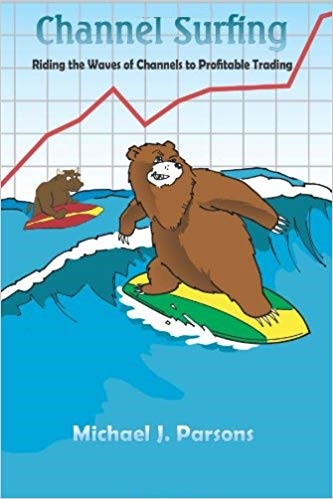


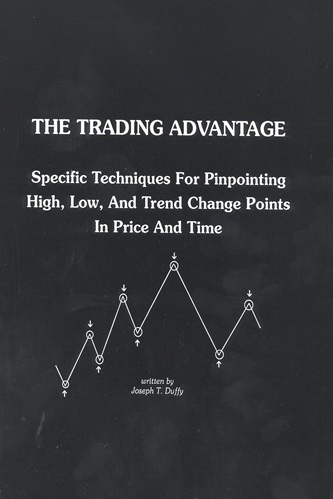
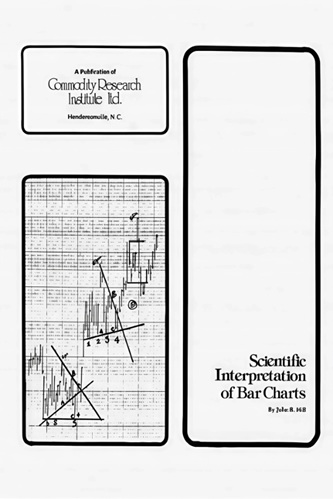
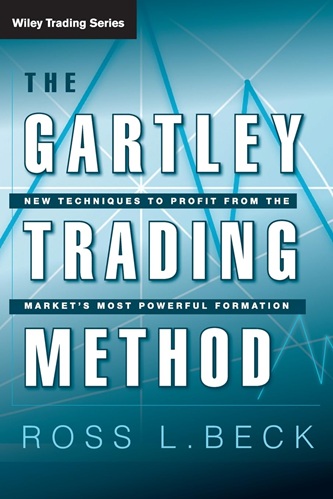
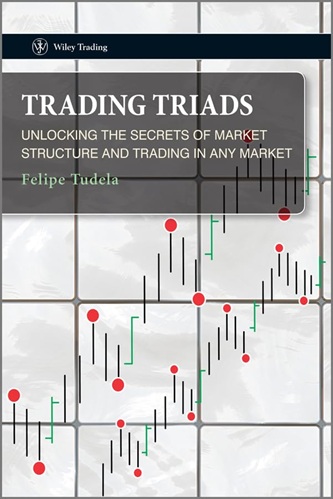
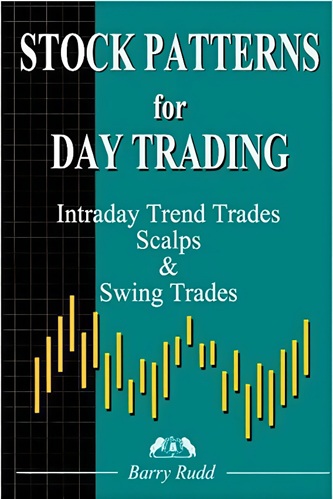
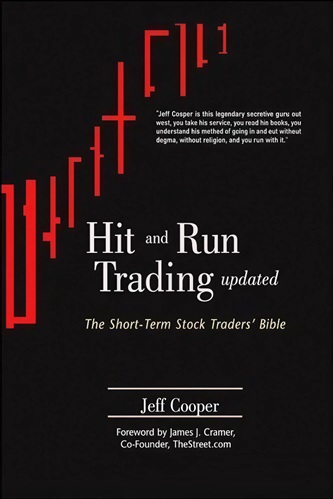
Dawson Johnston (verified owner) –
This book will save you weeks of learning. It shows how you don’t need any technical signals, you only need price movement and to understand true support and resistance areas to put the odds in your favour to trade. I wish I had read this book years ago.
Sawyer Stevens (verified owner) –
An excellent book for the price. Emphasis is on monitoring price action using channel lines, without an indicator or moving average (often pure noise) in sight. An easy to understand book, although you may want to read more than once to retrieve and consider all of the authors thoughts. Diagrams are reasonably clear. Shame no bibliography.
I have read many trading books over many years. This is now in my top five. Trading does not have to be complicated and unfocussed.
Palmer Villalobos (verified owner) –
In general it’s not bad book, for beginners it will probably have some eye openers. However it’s not a pratical book, most of the book’s “line drawing” is done in the middle of the chart (in hindsight). Which is nice but doesn’t help you on the right side of the chart where you are really trading.
Rayna Douglas (verified owner) –
If I would have to chose one single book to recommend to beginning/intermediate traders, this would be the one!
It’s very dense on thoughts and knowhow behind but still written in a very readable way. Even though it handles the most efficient alltime core-basics (no damage to repeat them for anyone!), it also has quite some gems from the uthor in it, this man definitely knows and explains techniques you don’t find elsewhere in one book.
The layout is OK but some bold text, bullet points, “inside of article structure”, etc. would definitely add usability and being appreciated on a rework if planned.
Overall a great book!
Emani Holmes (verified owner) –
I almost didn’t look at it, but I am sure glad I did! This book is packed with a lot of great stuff for technical traders, particularly for the price. The method turned out to be really good and my trading results so far show it. I really liked this book and it was very enjoyable to read as well. If you prefer computer indicators then this book will probably not suit you, but if you like trading based on price movement then this is one you will definitely want to read.
Estelle Williams (verified owner) –
This book has more unique and practical applications of chart reading than many books on trading. Instead of regurgitating the same methods everyone knows, Mr. Parsons leaves the well beaten path and shows unconventional entry and exit methods. He also discusses why they work.
He does make it look easy, real time it is not that easy. Some of the examples look like they have the benefit of hind-sight.
The reader should already be familiar with money management techniques and some chart pattern basics.
This is not a book for Quant – types. Discretionary traders who trade patterns (not oscillators, indicators) will find some gold here.
Willie Estrada (verified owner) –
One of the best books on channel trading I have ever read. By learning the techniques in this book you can be right over 80% of the time. Like in poker you can learn the market “tells”, the trick is how strong are they. By using channel surfing you miss a lot of the head fakes the market throws at you. The author also sells excellent videos on the subject.
Charlie Lowery (verified owner) –
This book is one of the very best books on trend trading that I have read. The first chapter contains a comprehensive overview of the concepts to be dealt with in the book, and the subsequent chapters explain and expand upon those concepts. In truth, although the ideas are well explained, it takes a little effort to grasp them. But the effort is well worthwhile. I have already noticed a real improvement in my ability to understand and trade trends, and a consequent improvement in my trading profits. I honestly believe the book is great value for money, and it has already paid for itself several times over. Buy it, read it, study it, apply it, and it will do the same for you. There is no way that it will not!
Shay Munoz (verified owner) –
Good reading, very simple technique which make a lot of sense. It has helped me to be more successful in my trading.
Yahir Mullen (verified owner) –
I have been trading for almost three years part time from home. I have read so many books about trading that I am now having to sell some to make room on my book shelf. This however is one book I will not sell. Trading is all about putting the odds in your favour so that if you do the same thing over and over again, you will in the long term come out in front. Maybe I have been lucky over the last few months, or maybe the markets now favour this type of trading style. All I know is that I seem to be out of the markets more than I’m in, but I have more winning trades than losing trades. The greatest lesson I can give people from this book is to learn to have patience by waiting for the right type of trades to come along. If they are not there then don’t trade.
Patience and putting the odds in your favour is how I have started to become successful at last.
Buy this book you will not be dissapointed.
Noa Poole (verified owner) –
As a former floor trader and member of a major US trading exchange, I have seen a lot of trading books, courses, and gurus with crazy ideas. Very few of them work and make you money. And some of them only work for a while before market conditions change, and their approach stops working. Other ideas are too complicated to follow, with many rules and exceptions. Or you have to watch the markets all day as a day-trader. But this is definitely not the case with “Channel Surfing.”
I have over 100 trading books in my library, and this ranks as one of my top 3. Any trader can follow the author’s trading approach and have very high odds for success. I strongly recommend that every trader get this book, whether you are a beginner or a professional. This book is also great for anyone who just simply wants to know what to do with their investments in their IRA, 401K, or mutual fund.
It’s so easy to “see the trees but miss the forest” when trying to trade the markets. It’s hard to know whether you should get in or out of a position in the market. With this book, the author helps you to clearly and confidently see the market the way it should be seen. You see where the likely trend is for the future in almost any market. I did not observe any “curve-fitting” or phony charts in the book, just dozens of real-world examples that will convince any open-minded skeptic. And the principles in this book are timeless – they will always work. This book is a great bargain for the price and a must-buy. You will not be disappointed.
Indie Dunn (verified owner) –
Good author
Zachary Preston (verified owner) –
you’re better off reading fib lines.
Katelyn Santos (verified owner) –
Excellent book on trend trading. Keeps things simple. Read it a couple of times to get all Parsons’ points. After reading many trading books, this is one of the more useful ones.
Ezequiel McCoy (verified owner) –
If you are a fan of support and resistance trading then you will much like this book. Michael Parsons goes in depth to explain how to use support and resistance not just horizontally but diagonally, channels and parallel lines. Some of material taught in this book are not available in a standard TA books. The draw down is that the book needs more chart diagrams to explain his concepts.
Walker Hardy (verified owner) –
I really like this book. I have read about channels and trend lines and such in other books, but they mention it as just another technical trading aspect. This book spends at least half its time discussing trend lines, channels, center of channel lines, and various support lines in great detail. Lines and price movements, that’s most of what this book is about. Any technical graphing trader has to read this book.
Now for the reasons the book got 4 stars. The editing was sub-standard, I don’t think a professional editor was involved. The author also likes to ramble at times. His ideas are just sparkling, but his presentation lacks now and then. The last parts of the book were less interesting I thought. The author talks about support and resistance lines, but since he draws over large time frames in all directions, the lines become a web, as he himself says. Same with repeating angles. I think channels are a fine and simple concept that really speaks to me, but webs of lines are too confusing and attract increasingly subjective interpretation. At the end of the book the author speaks about using channels for option trading which doesn’t interest me, but might attract other readers. The chapter about math for setting stops was a bit too much for me, I can quickly estimate the prices for stops using a calculator or in my head, no need to be that precise or elaborate.
So overall, I highly recommend this book, but don’t be surprised if you love the first half and wonder why the second half is not as good.
Quincy Jennings (verified owner) –
Well written and easy to understand book on the powerful topic of trading channels. I found this book reinforced some of my current trading methods and introduced a new perspective on new ways to profit from channels. I highly recommend this book!
Aliyah Hansen (verified owner) –
I consider myself an intermediate trader (retail) and I use channels extensively. With that being said, I added nothing to my skill set after reading Channel Surfing. I had hoped to add some knowledge about topics such as mean price, but there was nothing. I suspect that the author’s understanding of the mean is very sketchy. “Linear regression” gets a brief mention, then he procedes with a lengthy section on what he calls “Center Lines”. This weak and out-of-context coverage of the mean left me wanting. The author’s claim that this book has something to offer the advanced trader is like a false offer size seen in the market. I whacked a star for that.
The beginner (in technical analysis), should be able to glean some skills from the book, but its not at the top of my list for that purpose. See Turner and Nisson first. There are some basic set-ups here that should be of value to beginners. However, I whacked a star for poor editing and hard to read charts. I whacked another star because he recommends starting out on the short side of options. I left him 2 stars for effort, and to not completely scare away the beginners, but I have one final complaint: There is extensive material about manual charting that seems obsolete in the age of pocket computers. If you’re drawing on charts with colored pencils and rulers, then you’ll find this of value. If you use (or plan to use) advanced charting software, you’ll have to translate his procedures into their higher-tech equivalents.
Reuben McDowell (verified owner) –
Basic stuff. Channels and how to use them. Wow, that’s original!
And many of his charts have so many lines to try to (in retrospect) explain channel changes and justify what you can see in retrospect (the ultimate in curve fitting by eyeballing a line to past data). I was actually laughing out loud looking at these completely messed up charts.
I am not holding myself out to be an “expert” (though as one esteemed reviewer who has claimed this is one of the top 3 our of the hundreds of trading books he has read) I would counter that this is one is in the worst decile of the hundred’s of trading books that I have read.
There is some useful info for beginners, but mostly it is a waste of money. I feel bad writing such an awful review as I am sure the author is knowledgeable and sincere, but the book sucks.
Justin Lu (verified owner) –
I have recently taken a serious effort to learn how to invest better, as I have had to admit to myself that buy and hold is a really poor strategy. This is about the 8th book I have started to read on investing. So far I have only read the first chapter of this book, but it has opened my eyes on how to read price charts. In a very simple method you draw a few lines on a price chart, and you can tell when to buy and sell that stock. Granted I have a degree in physics, but you could teach a 7 year old child how to draw these lines.
The book has clear and well notated stock charts which make the material easy to understand. The book gets more complicated the further in to it you read. The author points out that you don’t need to use the added complications if you don’t want to, but they are there if you want to consider them. I will delve deeper into this book, but I am very happy I bought this book, after reading just the first chapter.
Jessica Travis (verified owner) –
This book has some excellent information in it, and I would not hesitate to recommend it for intermediate-level traders. With one caveat: It ultimately encourages you to trade everything that moves.
The channels soon turn into webs, and as we know, the nature of a web is that everything ends up connected to everything else. If you connect every high and every low in sight, price is sure to bounce off something. Unfortunately, you won’t know what, where, or when until after the fact. If you try to prognosticate, you’ll end up over-trading, and best case, nibbled to death by commissions or spreads, and tight stops.
I’ve been trading full-time for 6 years now. I’ve tried a lot of strategies. The best all-time performer by far is to trade with an obvious trend until it reverses enough to break the pattern or starts drifting sideways. I use trend lines, support and resistance, and simple channels. With the addition of money management, that’s it and that’s all.
It’s been my experience that when you try to get too fancy, you shoot yourself in the foot.
Laila Mayer (verified owner) –
I ordered this book due to all the excellent reviews on it, and when I saw the cover of the book with the surfing bear and bull, I figured it should be an interesting read compared to all those other trading books with plain or dull covers.
Anyway, enough about the cover. The book had great ideas regarding channels and they weren’t overly complicated or anything. Easy to follow techniques and strategies for entries and exits. I liked the section where the author shared the formula to calculate what the price should be at a point in the future, and how to use that prediction to set your stops. Recently, I entered a trade on Corning (GLW) based on the rebound entry just because I read that chapter the previous night and it worked out pretty well.
Some things I think would have made this book better would be to add a chapter totally dedicated to drawing channels. There are explanations on how to determine a channel such as connecting the highs and connecting the lows, and using at least 2 highs or lows (the more the better). But when price accelerates or crashes and the channels start to “fan”, or when the price starts getting choppy, I see the author drawing the new channel lines in the figures, but I’m not exactly sure how he decided that would be the new channel. When the price moves between highs and lows like a sin wave, it’s easy to draw the channel, but once it doesn’t follow the previous pricing patterns, how do we determine when or where the new channel will form? Would we just stay out of the trade and wait until a new well-defined channel forms? If so, that’s fine. But like I said, in the figures, the author includes all kinds of channel lines and points out where all the entries and exits would be. But how did the author pick those points to define the channels? If that were included, this book would be even more awesome than it already is.
One more thing that’s kind of similar to drawing channels, would be to include a deeper explanation on how “true” support and resistance lines are drawn. Those figures look like spider webs. Again, the author does briefly explain how to draw them, but I would like a section dedicated on why the author pick those specific high and low points versus connecting other highs and lows. Which highs and lows would be the most effective to define true support and resistance?
Overall, excellent book that I would definitely recommend to others. Easy to understand and implement in your trading. I’ll need to come back and re-read it again to make sure I didn’t miss out on anything.
Oliver Hickman (verified owner) –
First-off, I agree with the floor trader from 2007 – this is a top 3 or so trading book IMHO…I have read so many trading books from Amazon (on the order of several scores), unfortunately most of them are interesting but not practice for a variety of reasons…This book stands out as special for the following reasons:
1)It is unique, there are very few books that address channel trading anywhere near the depth here…Sure, they cover it like Trend line/Channels 101…Here, you will get your “Masters Degree” on the subject.
2)You can use it in any market that prints a price (stocks, Forex, commodities, etc.) and on any time frame…Day trader, EOD trader, weekly trader – you name it.
3) It works in any market type (see Van Tharp’s market types) – up, down, sideways. -After 2011 I made a goal of developing a sideways market trading system (as beginners we all trade up/down trends) – this book is going to help me achieve that goal.
What more can you ask for?
Some Caveats:
1) I would not recommend this book if you are just starting to trade because you will not appreciate the insights here…Trade for 6 months to a year and then most certainly put this on top of your list.
2) He could have included more charts to match all the great set-ups he discusses (this is a small point though as there are “enough” charts to understand.
I like this book so much, and I am so convinced it is going to meet my goal mentioned above, as well as take my trading up a notch in overall – that I am going to reread the entire book.
I was very impressed!
Scarlette Hale (verified owner) –
This book is among the best you will find on trading. It is based on pure technical charting, no fundamentals here. The author shows how to draw correct channel lines on charts of any time frame. The principles of the book is to make trading decisions based on the inside and outside channel lines. In an up trending market you buy on pull backs to the lower channel line and sell when the stock/commodity breaks the upper channel line. In down trending markets you short the stock/commodity when it is at the upper channel line and cover the short when it breaks the lower line. This is the best way to trade 90% of the time, it works! This is how I traded for years not with the charts, just buying and selling on pullbacks from 2003 to 2007 it worked beautifully during the bull market. The author also shows that when break outs occur in either direction the usually come back to touch the old channel line they broke out of one last time, with that line usually providing support or resistance in the future which is the place to buy breakouts. The book suggests only taking trades with a high probability of success with limited downside. The book does encourage stop losses when you are wrong. I really like that the author explained that trading ranges are usually not based on price but channel lines where stocks pull back to a lower channel line not a particular price. Many traders are waiting on a specific price to be met while a stock is making higher lows and does not give a lower entry price while the trend continues. The book shows how to really understand the trends and price channels on charts, truly a simple method to profiting in any market. It really enables readers to make sense out of price action. I highly recommend this book for all traders in all time frames. I really wish this would have been the first trading/investing book I read and not the 120th. It would have saved me a lot of time and money.